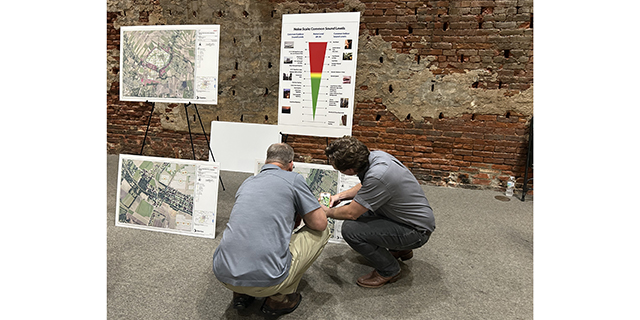OVERTIME OUTDOORS: Duck count in November lowest ever in La. since surveys began in 1969
Published 9:15 am Sunday, November 22, 2020
BATON ROUGE — You can’t hit what you can’t see, as the old baseball axiom goes, and you can’t count what isn’t there.
Larry Reynolds, Louisiana’s waterfowl study leader, said as much about the survey soon after the aerial waterfowl population survey conducted Nov. 9-10 and Nov. 12. He was almost apologetic to report the November survey was the lowest November estimate overall since the survey began in 1969.
The estimated total in the state a few weeks ago was 855,000 ducks in southwest, southeast Louisiana and Catahoula Lake. Previous lows were in 2008 (958,000), 2013 (1.02 million) and 2019 (1.04 million).
The total also was less than half the most recent five-year and long-term averages of 2 million, Reynolds wrote in his report.
“I hate writing these ‘worst-ever’ reports,” he wrote in a prepared statement, “but that seems to be the way 2020 is going, and you can’t count what isn’t there.”
Hopefully, between the time of that survey and now, many more ducks pushed down and there was less short-stopping in Missouri and Arkansas. Heck, based on the numbers from that recent survey, we need an arctic cold front or two before the second split begins Dec. 19 in the West Zone and East Zone.
I guess it would be asking too much for that to happen this week, the week of Thanksgiving, and before the first split ends Dec. 6.
Southwest Louisiana’s estimated total number of ducks in the November survey — 527,000 — was the second-lowest estimate on record and was 42 percent below the most recent 10-year average of 893,000, according to the report.
Reynolds, a veteran waterfowl biologist with the state Department of Wildlife and Fisheries, noted despite early severe freezes again this fall in Canada and the Dakotas, recent warming trends apparently stalled migratory movement into much of the Sportsman’s Paradise. He also wrote that widespread poor habitat conditions along the coast, low duck numbers in South Louisiana and surprisingly few geese in North Louisiana indicate “we are early in the migration.”
The only sizeable concentrations of ducks along transect lines in southwest Louisiana, where so many Teche Area waterfowlers hunt, were scaup in flooded fields north of Intracoastal City and a flock of mostly gadwalls in the marsh of Paul J. Rainey State Wildlife Refuge, according to Reynolds. Also, more concentrations of ducks were counted near Black Lake to the west of Hackberry but was far off the transect line.
The breakdown on southwest Louisiana’s estimated duck population based on the latest survey was 5,000 mallards, 12,000 mottled ducks, 186,000 gadwalls, 6,000 wigeons, 12,000 green-wing teal, 106,000 blue-winged teal, 24,000 shoveler and 38,000 pintails for a total of 389,000 dabbling ducks. Also, there were 61,000 scaup and 77,000 ringnecks for a total of 138,000 diving ducks in southwest Louisiana.
Reynolds pointed out habitat conditions in all three surveyed regions was impacted negatively by hurricanes and various storms. Water levels still are high in much of the coastal marsh, he wrote, there is virtually no seed-producing annual vegetation and submerged aquatic vegetation is scarce in much of the surveyed area.
Let’s keep our fingers crossed that habitat conditions improve and waterfowl flock down here for the rest of the season.
DON SHOOPMAN is outdoors editor of The Daily Iberian.





